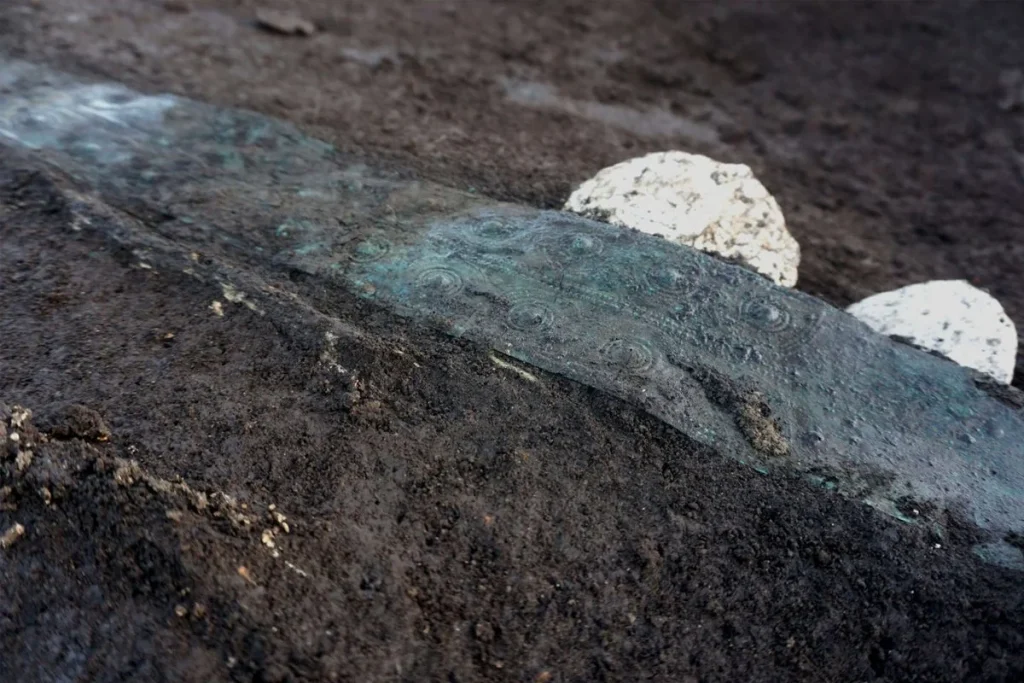
Italian archaeologists uncover large Iron Age necropolis at Amorosi
Italian archaeologists have uncovered a large Iron Age necropolis in Valle Telesina, near the Volturno River, during work on a new power plant being built by the Terna Group in Amorosi, in the province of Benevento.
The Inspectorate of Archaeology, Fine Arts and Landscape of the provinces of Caserta and Benevento announced the discovery.
Amorosi is a town in the Province of Benevento in the Campania region of Italy. It lies about 45 km northeast of Naples and about 30 km northwest of Benevento.
The history of Amorosi dates back to the 5th century BC. The area was ruled by various peoples, such as the Samnites, Romans and Normans. The town was first mentioned in the 10th century.
📣 Our WhatsApp channel is now LIVE! Stay up-to-date with the latest news and updates, just click here to follow us on WhatsApp and never miss a thing!!
During the excavations, he discovered 88 tombs belonging to the “Pit Tomb Culture“, an Iron Age people who lived in Campania before the appearance of the Italic Samnites.

Dating from the 8th to the mid-7th century BC, the tombs belong to men and women who were buried together with grave goods and funeral offerings. In some of the graves, ceramics of various shapes were also placed as offerings to the deceased’s success.
While weapons are mainly found in male graves, ornaments such as fibulae, bracelets, necklaces, worked bone and amber are found in female graves.
The most remarkable tombs were two monumental mound tombs, indicated by the presence of substantial stone circles about 15 meters in diameter. According to experts, the grave owners were high-status individuals.
Soil samples taken during the excavations were sent for an archaeobotanical analysis to provide data on the environment and vegetation, in addition to anthropological analysis of the bone remains.
Cover Photo: Superintendency of Archaeology
You may also like
- A 1700-year-old statue of Pan unearthed during the excavations at Polyeuktos in İstanbul
- The granary was found in the ancient city of Sebaste, founded by the first Roman emperor Augustus
- Donalar Kale Kapı Rock Tomb or Donalar Rock Tomb
- Theater emerges as works continue in ancient city of Perinthos
- Urartian King Argishti’s bronze shield revealed the name of an unknown country
- The religious center of Lycia, the ancient city of Letoon
- Who were the Luwians?
- A new study brings a fresh perspective on the Anatolian origin of the Indo-European languages
- Perhaps the oldest thermal treatment center in the world, which has been in continuous use for 2000 years -Basilica Therma Roman Bath or King’s Daughter-
- The largest synagogue of the ancient world, located in the ancient city of Sardis, is being restored











Leave a Reply